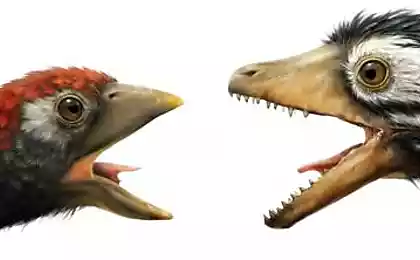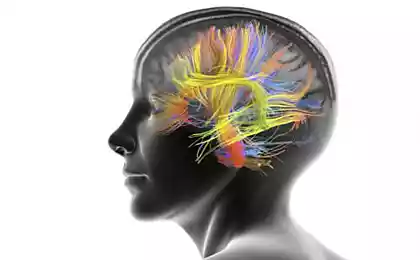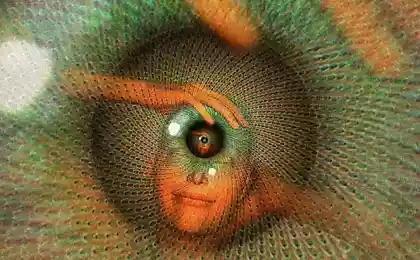607
In any difficult situation and fly right. Why birds do not collide in flight
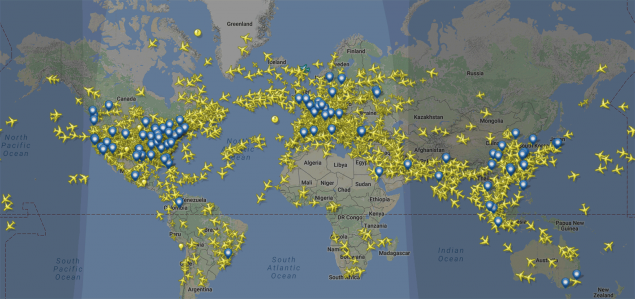
The location of the aircraft in real time
Every year in the sky, more planes according to FlightRadar24 right now in the air are 12 385 courts, and this without the military. After a few years they may join the thousands of unmanned postal drones for delivery of goods and parcels.
In such a situation, the question arises: how to ensure the safety of air operations? Is there a way to create an automated system of avoiding collisions, to act on all manned and unmanned ships? Well, in developing effective navigation systems the aviation industry could learn a lot from birds and insects. Birds have mastered navigation in the air 150 million years ago, and the insects — 350 million years ago. They have a big handicap in research and development.
Obviously, for a long time of evolution, birds and insects have developed specific algorithms for avoiding collisions in flight. Scientists believe that such algorithms should be more effective in birds because their body is not reinforced exoskeleton, like insects. Birds are heavier than insects and fly at higher speeds. They have fragile bodies. Obviously, a collision in flight will be for the birds very painful. This bird is less likely to leave offspring. That is, the system of avoiding collisions in flight — obviously a beneficial trait in natural selection.
In previous years scientists have studied how birds are moving away from obstacles, flying in the narrow gap and keep your distance in the pack. But I have never investigated the question: what happens when two birds are flying on a collision course. As they do in this case?
Professor Mandyam Srinivasan (Mandyam Srinivasan) from the University of Queensland (Australia) has set the task to examine what strategies used birds to avoid collisions on a collision course. To do this, from both sides of the tunnel with a length of 21.6 meters was produced a couple of birds to meet the other. Of interest, the potential actions of the birds was taken as hypotheses in the Bayesian network to compute their probabilities. Predicted probabilities were compared with observed facts. Thus the researchers made conclusions on strategies for avoiding collisions, which act in birds.
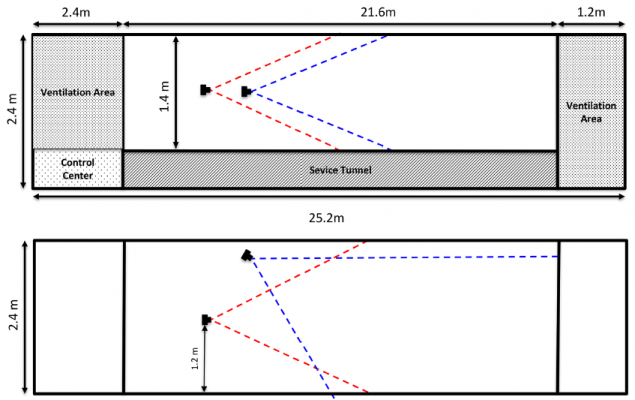
The test tunnel. Blue and red dotted lines show the field of view of surveillance cameras
Prior to testing 10 of budgerigars (Melopsittacus undulatus) male was trained to fly the tunnel from beginning to end alone.

Drongo, one of the ten budgies who participated in the study
4 days was recorded 102 experimental flight 7 pairs composed of 10 budgies. There was not a single collision. Then analyzed the videos with fixation of, how birds shifted to the sides or the height when approaching each other.
The results were quite unexpected. As can be seen from the table, the birds showed a tendency almost always to move to the right, although the probability of such bias varies greatly from specimen to specimen.

This is a very interesting conclusion. Previous research on bees has shown that bees tend to shift to the left when approaching each other. One way or another, but the tendency to move in a specific direction is important. Obviously, this knowledge should be the same for all individuals in the population. If the birds will be the approach to move in a random direction, then when you select left/right, the probability of collision is 50%.
Parrots flying in the tunnel at different heights. Scientists have discovered that some specific individuals clearly prefer to fly below/above the other the individual that does not fit a normal distribution.

Preference of specific individuals to fly above or below other individuals
Despite the occasional changes in altitude, in General, birds during the approach do not change the height, and are shifted in the horizontal plane. Most often the right. Scientists conclude about the presence of budgerigars a kind of rules is sewn on a "hardware level". This could likely be due to the difference in the left and right hemispheres of the brain. So, parrots the right hemisphere and the left eye are responsible for tactical tasks, such as detection of a probable collision in flight. In turn, the left hemisphere and right eye do different things such as maintenance, flight and speed control. By the way, this is one of the evolutionary advantages of animals with different functions of the left and right hemispheres (see the scientific paper "Survival with an asymmetrical brain: advantages and disadvantages of cerebral lateralization").
Thus, the study confirmed that the presence of the most General and simple rules will allow animals or machines to avoid collision.
First, you need to agree to move in the same direction. Whether left or right, but must all move in the same direction.
Second, to develop an algorithm of change of elevation. One of the participants in the movement must shift up and the other down. The rules of elevation changes can be implemented in different ways. For example, to assign the hierarchical sequence number to each individual aircraft. When meeting the plane with the higher number in the hierarchy is always upwards, and lower down. Universal hierarchy difficult to implement, and it requires the exchange of information between the courts before the convergence. Another option is to install each aircraft rule random offset up or down. In this case, the risk of collision will be reduced from 100% to 50%.
Scientists have failed to understand how birds choose the direction of the offset in height. Perhaps they, too, there is a certain hierarchy.
Article published September 28, 2016 in the journal PLOS One (doi: 10.1371/journal.pone.0162435).
Source: geektimes.ru/post/281008/



